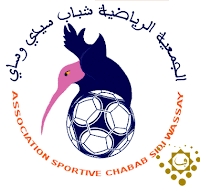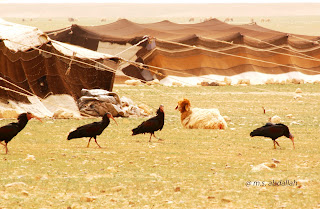As in most waders, sexes in NBI are similar in plumage, although males are generally larger than females. For instance, males have slightly longer wings than females (403-420 vs. 390-408 mm). As with other ibises that breed in colonies, males have also longer beaks.
Babbitt et al. (2007) made an analysis of sexual dimorphism in ibises. Using all 16 species for which sufficient data were available, they found that the degree of sexual dimorphism in proportional bill length was positively associated with the incidence of colonial breeding (r = 0.68, P = 0.005). On the other hand, the degree of sexual dimorphism in proportion to bill length was not significantly associated with the incidence of group foraging (r = 0.36, P = 0.18). The incidence of colonial nesting and group foraging were correlated (r = 0.55, P = 0.03) with each other, but not as strongly as the degree of sexual bill length dimorphism and colonial breeding. That means that males of gregarious breeding ibis species, like NBI, tend to have longer bills than females.
Size matters: Longer-billed males are more successful in attracting a mate.
References
Babbitt, Gregory A.; Frederick & Peter C. (2007). Selection for sexual bill dimorphism in ibises: an evaluation of hypotheses. Waterbirds 30 (2): 199–206.
Siegfried, W.R. (1972). Discrete breeding and wintering areas of the Waldrapp Geronticus eremita (L.). Bulletin of the British Ornithologists' Club 92: 102–103.
Brown, L. H., Urban, E. K., & Newman, K. (1982). The birds of Africa. Vol I.
.jpg) |
| Photo Brian Stone |
Size matters: Longer-billed males are more successful in attracting a mate.
Regarding the differences between the two populations, NBI have longer bills in Morocco than in Turkey. There's not a known reason for that, but the sexual dimorphism still exists in both populations.
Population
|
Male bill length
|
Female bill length
|
141.1 mm (5.55 in)
|
133.5 mm (5.25 in)
| |
129.0 mm (5.08 in)
|
123.6 mm (4.87 in)
|
Nevertheless, the difference is very small, about 5%, to be realised in the field.
Babbitt, Gregory A.; Frederick & Peter C. (2007). Selection for sexual bill dimorphism in ibises: an evaluation of hypotheses. Waterbirds 30 (2): 199–206.
Siegfried, W.R. (1972). Discrete breeding and wintering areas of the Waldrapp Geronticus eremita (L.). Bulletin of the British Ornithologists' Club 92: 102–103.
Brown, L. H., Urban, E. K., & Newman, K. (1982). The birds of Africa. Vol I.






